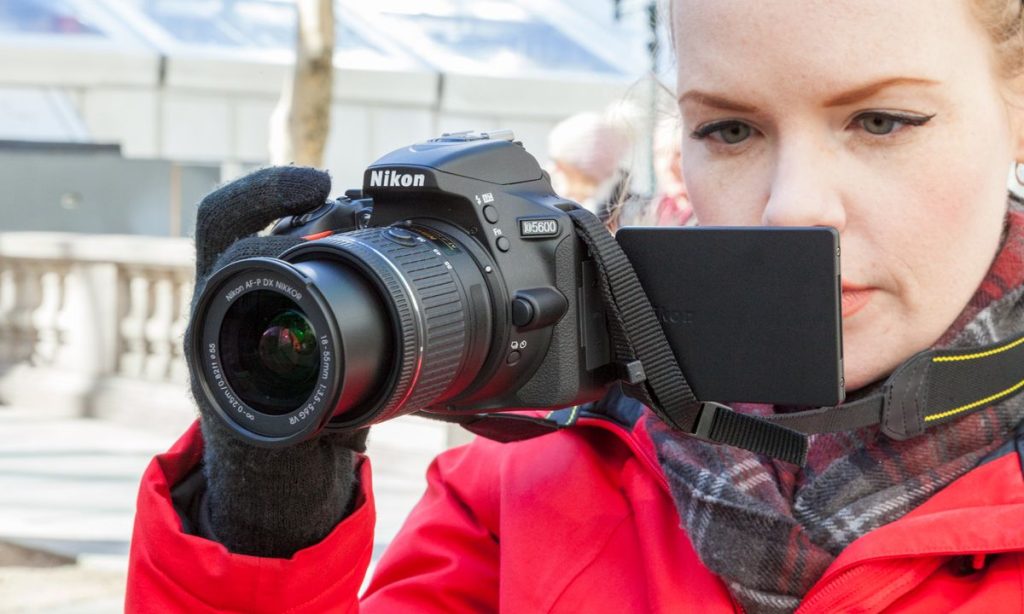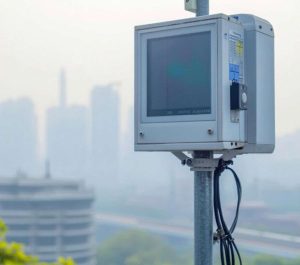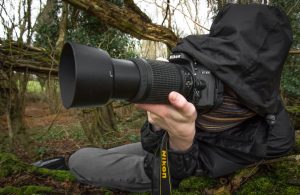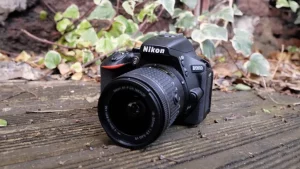The Nikon D5600 is a popular entry-level DSLR camera, known for its high image quality, user-friendly interface, and advanced manual mode controls. Whether you’re a beginner learning photography or an enthusiast looking for a lightweight DSLR, the D5600 offers a great balance between performance and affordability. This review explores its features, manual mode capabilities, and why it remains a solid choice for photographers.
1. Key Features of the Nikon D5600
-24.2MP APS-C CMOS Sensor – Produces sharp and detailed images.
-EXPEED 4 Image Processor – Fast image processing for vibrant colors and low noise.
-39-Point Autofocus System – Ensures accurate focusing for sharp shots.
-5 fps Continuous Shooting – Captures action shots with ease.
-ISO 100 – 25,600 – Performs well in various lighting conditions.
-3.2-inch Vari-Angle Touchscreen LCD – Useful for creative compositions.
-Full HD 1080p Video at 60fps – Smooth video recording capabilities.
-Built-in Wi-Fi, Bluetooth & SnapBridge – Easy photo sharing.
🔹 Who is it for?
- Beginners looking for an easy-to-use yet capable DSLR.
- Enthusiasts who want manual controls for creative photography.
- Travel & portrait photographers needing a lightweight camera with good image quality.
2. Manual Mode Photography with the D5600
The manual mode (M mode) on the D5600 allows complete control over aperture, shutter speed, and ISO, making it ideal for photographers who want to experiment and refine their skills.
a) Aperture Control (f-stop)
- The D5600 supports a wide range of lenses, allowing photographers to control depth of field (DOF) effectively.
- f/1.8 – f/2.8 → Best for portraits (sharp subjects, blurred backgrounds).
- f/5.6 – f/8 → Ideal for landscapes and group photos (sharp focus throughout the frame).
- f/11 – f/16 → Great for detailed architecture shots but requires more light.
b) Shutter Speed Control
- 1/1000s – 1/4000s → Freezes fast-moving subjects (sports, action shots).
- 1/250s – 1/500s → Ideal for general photography (portraits, street scenes).
- 1/60s – 1/125s → Suitable for handheld low-light photography.
- 1/30s or lower → Use a tripod for night photography or creative motion blur.
🔹 Tip: The D5600’s 5 fps burst mode helps capture moving subjects with precision.
c) ISO Performance
- ISO 100 – 400 → Clean and noise-free images in bright light.
- ISO 800 – 1600 → Works well for indoor or low-light conditions.
- ISO 3200 – 6400 → Can be used at night, though some noise is visible.
- ISO 12,800+ → Best avoided unless necessary due to noise.
🔹 Tip: The D5600’s noise reduction settings help maintain image quality at higher ISO values.
3. Autofocus and Low-Light Performance
The 39-point autofocus system ensures accurate and fast focusing in various situations:
- Single-Point AF → Best for precise focusing (portraits, still subjects).
- Continuous AF (AF-C) → Ideal for moving subjects (wildlife, sports).
- Face Detection AF → Useful in live view mode for portraits.
🔹 Low-Light Performance:
- Performs well in indoor and nighttime conditions, especially with fast lenses (f/1.8, f/2.8).
- The AF system struggles in extreme low light, so manual focus might be needed.
4. Build Quality and Handling
- Lightweight and compact (465g body), making it easy to carry for travel photography.
- Deep grip design ensures comfortable handling, even during long shoots.
- Button layout and touchscreen controls are intuitive and user-friendly.
🔹 Tip: The articulating touchscreen is perfect for vlogging and creative angles.
5. Video Performance
The Nikon D5600 records Full HD 1080p videos at 60fps, offering smooth, high-quality footage.
-
Pros:
– Good color accuracy and sharpness.
– Flip-out screen for vlogging.
-xternal microphone support for better audio. -
Cons:
– No 4K video.
– Lacks in-body image stabilization (tripod or gimbal recommended).
6. Lens Recommendations for the D5600
- Nikon 50mm f/1.8G → Excellent for portraits with beautiful bokeh.
- Nikon 18-140mm f/3.5-5.6G → Versatile for travel and everyday photography.
- Nikon 70-300mm f/4.5-6.3G → Best for wildlife and sports photography.
- Sigma 17-50mm f/2.8 → A great general-purpose lens with a bright aperture.
7. Pros & Cons of the Nikon D5600
Pros:
– Excellent image quality with 24.2MP sensor.
-Great battery life (820+ shots per charge).
-Vari-angle touchscreen for flexible shooting angles.
-Lightweight and compact for travel-friendly use.
-Good autofocus and manual mode controls.
Cons:
-No 4K video recording.
-Single SD card slot (backup storage not available).
-No in-body stabilization (rely on VR lenses or a tripod).
8. Who Should Buy the Nikon D5600?
- Beginners: User-friendly, yet powerful enough for learning manual mode photography.
- Enthusiasts: Excellent balance between performance and affordability.
- Travel Photographers: Lightweight and compact, with great image quality.
- Vloggers/Content Creators: Articulating screen, though limited by 1080p video resolution.
Final Verdict: Is the Nikon D5600 Worth It?
– The Nikon D5600 is a fantastic entry-level DSLR with manual mode flexibility, strong image quality, and solid low-light performance. While it lacks 4K video and in-body stabilization, its lightweight design, excellent touchscreen, and great battery life make it an outstanding choice for beginner and enthusiast photographers.
If you’re looking for a versatile DSLR with manual mode controls, the D5600 remains one of the best options in its class!



